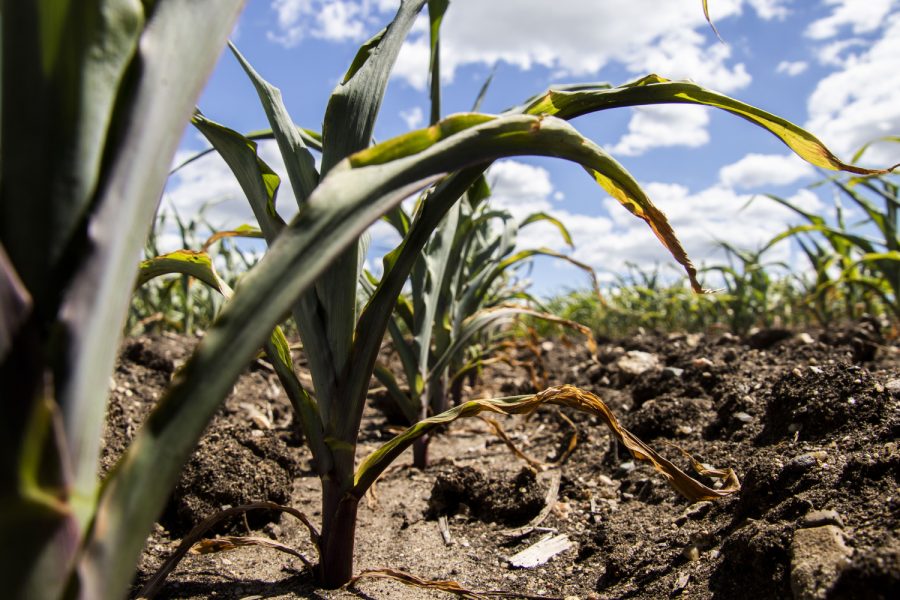Growers in Johnson County combat drought conditions
The drought has recently caused issues for farmers, who are working to battle the lack of rain in the area.
Corn leaves turning brown due to lack of rain on Monday, June, 21, 2021. A field planted with corn start showing the effects of lack of rain fall. The leaves are turning brown, and the stalks are short.
June 27, 2021
Steve Swenka, owner of Double G Angus Farms in Johnson County, said this summer his farm has experienced one of the worst droughts in his life.
“We have had only about two inches of rain in the whole month of May and only two-tenths of an inch in the month of June so far,” Swenka said on June 22, before Johnson County experienced several rain showers over the next few days. “We have cow pastures burning up, creeks are shrinking all the way to the bed, and you see corn in the middle of the hot day start to curl up.”
The National Integrated Drought Information System, last updated June 24, said Johnson County’s drought condition is “abnormally dry” and is listed with a below-average participation rate from the last 30 days.
In the United States, 181.5 million acres of crops and 14.4 million beef cattle are currently experiencing drought, according to the U.S. Department of Agriculture.
Jake Kundert, the food systems director of Grow Johnson County, an Iowa Valley nonprofit organization, said he has also felt the impact of the drought on their produce.
Grow Johnson County produces over 25,000 pounds of organic vegetables every year and donates them to local hunger-relief agencies.
RELATED: Iowa City plants 400 trees in 2020, looks to break planting record in 2021
“Everything we grow gets donated,” Kundert said. “We give jobs on the farm and teach people how to do these techniques by themselves.”
Kundert said food organizations, like Grow Johnson County, have been having a tough time in countering this recent struggle to grow crops.
For Grow Johnson County, they have been working to irrigate as much as they can until they see more rain.
“The challenge is putting our crops that have been inside the garden centers, which are in perfect conditions, and then taking them out into the dry and hot sun. The plants are dying,” Kundert said.
Kundert said Grow Johnson County is trying new watering systems that can hold water more efficiently, like a no-till production method, and adapting to the Iowa weather.
If water is not immediately given to the plants from creeks and irrigation systems, then they will have less volume and maybe not even the same crop.
Buyers of these crops are seeing less and less volume of production since the lack of rain has hit them.
“Some producers I know couldn’t list a lot because the weather affected it and they could not get water systems on the plant,” said Ben Dolan, a worker at Field to Family.
This company buys crops from other producers to resell.
Farmers must keep adapting and overcoming obstacles like weather change.
As soon as Grow Johnson County is done replanting the crops in outdoor soil, Kundert said Grow Johnson County staff is doing everything they can to water them.
“Once we plant them, we are thinking about what water and irrigation system we can use to give these plants the water they need,” Kundert said.
Swenka said he is not able to put up irrigation systems at the last minute. His first goal is to take care of the cattle.
“We are pumping as much water as we can out of the creek to water the burning up cow pastures,” Swenka said. “Goal one is to get feed for the summer, goal two is to get feed for the winter.”
Swenka kept saying that farmers are a resilient bunch.
“We are always overcoming and adapting to new things every year, it is all about managing risk and resources,” Swenka said.



